The Hidden Hazards: Why Foxtails Pose a Serious Threat to Dogs and Horses
- stephanie pope

- Aug 15, 2023
- 16 min read
Updated: Sep 25, 2024

As the sun-drenched days of summer beckon, our beloved pets and majestic horses eagerly venture outdoors, their spirits lifted by the promise of adventure and freedom. However, amidst the beauty of nature's bounty lies a silent threat that often goes unnoticed—the perilous foxtail. With its innocuous appearance, the foxtail might be mistaken for a mere tuft of grass, but beneath its unassuming facade lies a potential danger that can wreak havoc on our cherished animal companions. In this article, we delve into the hidden dangers of foxtails for both pets and horses, shedding light on the risks they pose and the imperative need for vigilance. By understanding the menace foxtails present and taking proactive measures, we can ensure the safety and well-being of our four-legged friends during their outdoor escapades. Join us as we explore the importance of awareness and the steps we can take to shield our pets and horses from this often overlooked hazard.
Understanding Foxtails - Recognizing Their Unique Characteristics, Varieties, and Habitats

Foxtails, those seed-bearing structures of certain grasses, have earned their name due to their uncanny resemblance to the fluffy tail of a fox. However, beneath their innocuous appearance lies a potential threat that spans various regions across the United States. These structures, while seeming harmless, consist of sharp, barbed seeds with a cunning purpose—ensuring the propagation of the plant. Their unique design not only aids in burrowing into the ground but also equips them to attach themselves to fur, clothing, and even skin, posing risks to both pets and horses.
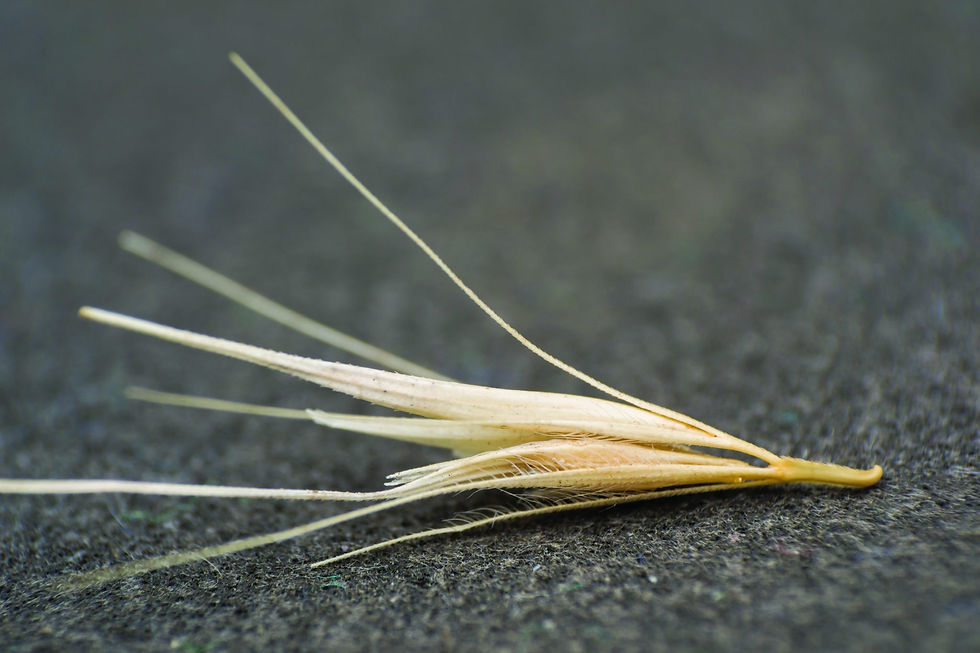
Perhaps the most alarming aspect of foxtails is their remarkable capacity for rapid spread. As these grasses mature and dry out, their barbed seeds readily detach and become airborne with the wind, hitching rides on animals or clothing. This ability transforms even seemingly foxtail-free zones into potential danger zones, lurking with hidden threats. The pointed structure of the seeds enables them to latch onto fur, skin, and even penetrate the mouths of horses. Once attached, they can insidiously work their way deeper, giving rise to irritation, discomfort, and a range of potential health complications.
Foxtails can be found in a wide range of outdoor environments, from expansive fields to well-tended gardens and even trails favored by horseback riders and pet owners. These grasses often flourish in areas with abundant sunlight and minimal competition from other plants, making them particularly prevalent in dry, open spaces. Their ability to thrive in various conditions and terrains increases the likelihood of pets and horses coming into contact with them during their outdoor activities.
Introducing Different Varieties of Foxtails
Foxtails, those seemingly innocuous grass structures that carry hidden risks, come in several varieties, each with distinct characteristics. Let's take a closer look at these varieties:
Green Foxtail (Setaria viridis): Recognizable by their vibrant green seeds, these foxtails measure about 0.07-0.08 inches in size. Green foxtails are widespread and can be found across a large portion of the United States.
Yellow Foxtail (Setaria pumila): Yellow foxtails boast a reddish-yellow hue. They're seeds, measuring about 0.07-0.11 inches. These foxtails have a broad distribution, spanning from the continental United States to Canada.
Giant Foxtail (Setaria faberi): Giant foxtails earn their name through their impressive growth, often reaching heights exceeding 6 feet. Their seeds, ranging from 0.09-0.11 inches. Giant foxtails are found in various regions, stretching from the Midwest to the East Coast. Interestingly, they can also be encountered in some West Coast states, including California.
Foxtail Millet (Setaria italica): Foxtail Millet is a different species within the Setaria genus, primarily cultivated for its grain. While it shares the foxtail-like appearance, its seeds are used for culinary purposes in some cultures.
Each type of foxtail possesses its own ecological niche and adaptability, making them capable of thriving in a range of conditions. While they may vary in size, color, and distribution, one commonality among all foxtail plants is their potential to pose risks to animals due to the barbed nature of their seeds. Understanding the different types of foxtails and where they can be found is crucial for taking proactive measures to protect pets, horses, and other animals from potential encounters and related complications.
Other Areas Foxtails are Found
Here are some regions in the United States where foxtails can be commonly found:
West Coast: Foxtails are widespread along the entire West Coast, from California to Washington. The warm and arid climate in many parts of this region provides an ideal habitat for foxtails to grow and spread.
Southwest: States like Arizona, New Mexico, and parts of Nevada are known for their desert landscapes. These areas provide optimal conditions for foxtails to flourish, especially in open fields and natural spaces.
Southern States: States in the southern region, including Texas, Oklahoma, Louisiana, and Florida, can also experience significant foxtail growth due to their warm climates and abundance of open spaces.
Central Valley: The Central Valley of California is particularly susceptible to foxtail growth due to its combination of warm temperatures and dry conditions. Foxtails can be found in both rural and urban areas.
Mountain States: Even in higher elevation areas, foxtails can be found in certain regions. These grasses can thrive in drier mountain valleys and foothills.
Midwestern States: Some Midwestern states, such as Kansas, Nebraska, and parts of Missouri, may have foxtails in their grasslands and open areas.
Southern California: The combination of a Mediterranean climate and disturbed habitats can lead to foxtail growth in Southern California, including urban and suburban areas.
Pacific Northwest: While not as prevalent as in some other regions, foxtails can still be found in parts of the Pacific Northwest, particularly in drier areas and open spaces.
Dangers of Foxtails for Pets and Horses
The consequences of foxtail encounters are not to be taken lightly. These seemingly innocuous seeds can lead to infections, abscesses, and even more severe health issues if left untreated. As a responsible pet/horse owner, it's vital that we acknowledge the potential threat foxtails pose and take proactive measures to safeguard our beloved companions during their outdoor ventures. By staying informed and vigilant, we can mitigate the risks associated with foxtail exposure and create a safer environment for our pets and horses to thrive in.
Embedding in Fur, Ears, Nose, Eyes, Paws and Mouths

Foxtails have an uncanny knack for burrowing their way into the tiniest crevices of an animal's body. In pets, they can become ensnared in fur, working their way deep into the skin, causing discomfort, and even leading to infections. For horses, foxtails can become lodged in their manes, tails, and even more critically, their mouths. Once embedded, they can cause persistent irritation, inflammation, and severe pain.
The sensitivity of certain areas, such as the ears, nose, and eyes, magnifies the potential dangers. Foxtails can infiltrate these sensitive regions, causing irritation, swelling, and even impairing an animal's ability to see, hear, or breathe properly. Left untreated, these embedded foxtails can lead to severe health complications.
Causing Infections, Abscesses, and Organ Damage

Perhaps one of the most insidious dangers of foxtails lies in their capacity to trigger infections and abscesses. The barbed structure of the seeds can create an avenue for bacteria to enter the body, resulting in localized infections that may fester and spread. In some cases, these infections can evolve into painful abscesses, necessitating medical intervention.
Furthermore, foxtails are not limited to causing surface-level problems. If ingested, inhaled, or carried into the body through a wound, they have the potential to migrate internally. This migration can lead to organ damage, such as punctured organs or punctured blood vessels, posing severe threats to an animal's overall health.
Discomfort, Pain, and Potential Long-Term Health Issues
Foxtail-related issues can lead to significant discomfort and pain for animals. Embedded foxtails cause persistent itching, scratching, and discomfort, affecting an animal's quality of life. This discomfort can escalate if the foxtail continues to burrow deeper, intensifying the pain and distress experienced by the animal.
In some cases, the consequences of foxtail encounters can extend beyond immediate discomfort, potentially leading to long-term health issues. Chronic infections, untreated abscesses, and organ damage can have lasting effects on an animal's overall health and vitality. Addressing these issues promptly is essential to preventing more severe complications down the road.
By understanding the multifaceted dangers that foxtails present, pet owners and horse owners can better appreciate the importance of preventive measures and thorough inspections. Regular grooming, vigilant outdoor activities, and prompt medical attention are key components of safeguarding our beloved animals from the lurking threat of foxtails.
Recognizing Signs of Embedded Foxtails
Being able to identify the telltale signs of a foxtail encounter is crucial for prompt intervention and ensuring the well-being of your pets and horses. While some of these symptoms may be indicative of other issues, they should never be ignored, as they could potentially signal a foxtail-related problem.

Excessive Scratching, Sneezing, Head Shaking, or Limping If you notice your pet or horse excessively scratching a certain area, repeatedly sneezing, vigorously shaking their head, or suddenly limping, these actions might be responses to the discomfort caused by a foxtail. Scratching or shaking is often an attempt to alleviate the irritation caused by an embedded foxtail, while limping could indicate that a foxtail has become lodged in a paw or hoof.
Changes in Behavior or Appetite Foxtails can trigger pain and discomfort, which might lead to behavioral changes. If your usually energetic pet becomes lethargic, anxious, or unusually withdrawn, it could be a sign that something is amiss. Similarly, horses that are reluctant to move, exhibit signs of agitation, or suddenly refuse food might be signaling a problem.

Presence of Swelling, Discharge, or Discomfort in Affected Areas Keep a watchful eye on any unusual changes in specific body areas. Swelling, redness, or discharge from the eyes, ears, nose, or any part of the body might indicate the presence of an embedded foxtail. Additionally, if an animal seems to be consistently licking or biting a particular spot, it could be a sign of discomfort caused by a foxtail.
Excessive Drooling: If a foxtail or any foreign object becomes lodged their mouth or throat, it can trigger a defensive response that includes increased salivation. They may drool excessively due to the irritation caused by the foxtail's presence. The discomfort from the foreign object can prompt the salivary glands to produce more saliva in an attempt to remove or alleviate the irritation.

Difficulty Swallowing and Dropping Food: A foxtail lodged in the mouth or throat could make it challenging for them to swallow normally. This discomfort might cause them to drop their food while attempting to eat or to show reluctance in consuming their meals. The act of swallowing may exacerbate the discomfort, leading them to avoid food or display an aversion to eating.
Sneezing, Coughing, Difficulty Breathing, Discharge: A foxtail lodged in the nasal passages or throat can trigger frequent and forceful sneezing, coughing or difficulty breathing. Discharge from the nose, which might be clear, mucous-like, or even bloody, is a common sign of irritation caused by a foxtail. The discharge can vary in consistency and color depending on the severity of the issue.
Remember that early detection and action are paramount when it comes to foxtail-related issues. If you observe any of these signs or suspect your pet or horse has encountered a foxtail, don't hesitate to investigate further and seek professional veterinary assistance if needed. The sooner the issue is addressed, the better the chances of preventing complications and ensuring your animal companion's swift recovery.
Checking for Foxtails on Pets and Horses
Performing thorough checks for foxtails on both pets and horses is a vital practice that can help you identify and address potential issues before they escalate. Regular inspections are key to ensuring the well-being of your animals after outdoor activities.
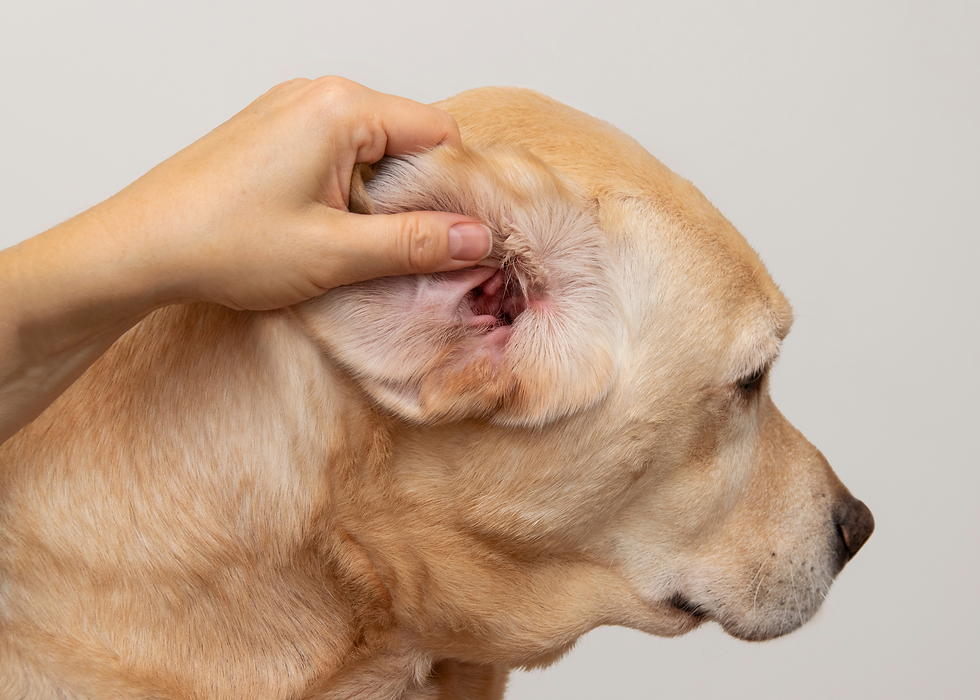
Inspecting Paws, Ears, Eyes, Fur, and Mouths: After returning from an outdoor outing, take the time to carefully examine your pets' paws, ears, eyes, fur, and horses' mouths. Use a well-lit area to enhance visibility. Look for any signs of foxtails, such as visible seeds or areas of irritation.
Recognizing Unusual Behavior or Discomfort: Pay attention to any changes in behavior or signs of discomfort exhibited by your pets and horses. If they suddenly start scratching a specific area, shaking their heads repeatedly, or avoiding putting weight on a particular leg, it could indicate the presence of an embedded foxtail.

Using Gentle Inspection Methods: To check for foxtails, use gentle methods that don't cause additional discomfort to your animals. Run your fingertips through their fur, parting it to reveal the skin underneath. Alternatively, use a fine-toothed comb to gently comb through the fur or mane. Take care not to press too hard, as you don't want to inadvertently push any foxtails deeper.
Focus on Vulnerable Areas: Concentrate on areas where foxtails are more likely to become lodged, such as between toes, around the ears, within the fur of the tail, and in the manes of horses. Also, check the spaces between paw pads for any foxtails that might have worked their way in.
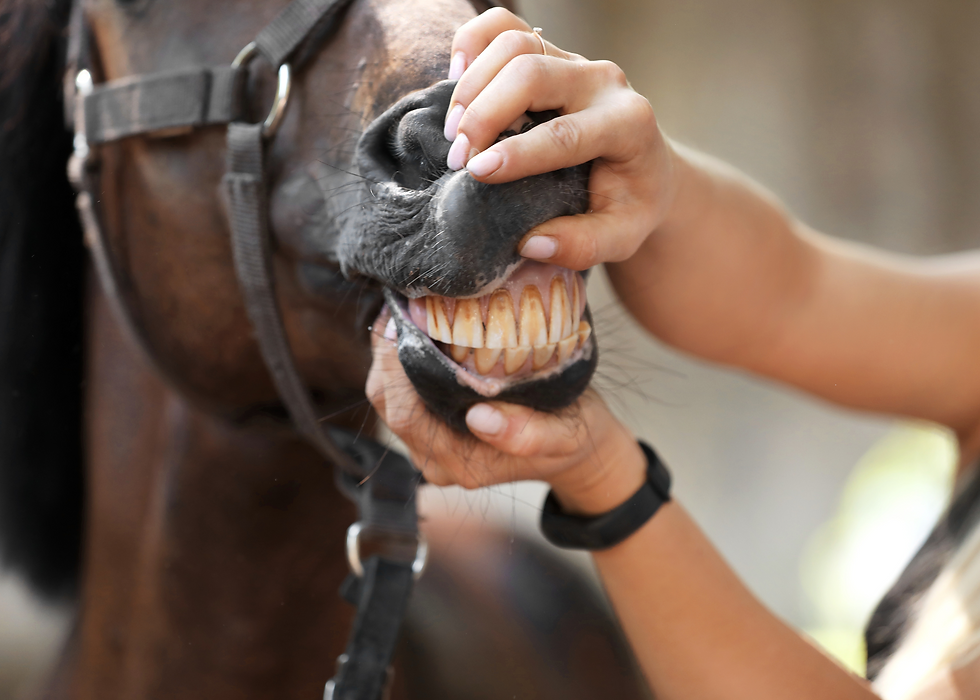
Have Regular Dentals: Dentals are an easy way to have a professional see what is going on in the mouth. An equine dental professional can check hard to see areas in the back and sides of the horses mouth.
Seek Veterinary Assistance if Needed: If you discover an embedded foxtail or if you notice persistent signs of discomfort, such as swelling, redness, or discharge, consider seeking professional veterinary assistance. In some cases, foxtails may require specialized tools and expertise to be safely removed.
Keep Records: Maintain a record of your inspections, including any foxtails you find and their locations. This can be helpful for tracking the areas where foxtails are most likely to be encountered, allowing you to be more vigilant during future outdoor activities.
By incorporating these comprehensive checking practices into your routine, you can promptly identify and address any foxtail-related issues that your pets and horses may encounter. Regular inspections, combined with swift action when necessary, contribute to a safer and more enjoyable outdoor experience for your beloved animal companions.
Preventive Measures for Avoiding a Foxtail Invasion
To safeguard your pets and horses from the potential dangers of foxtails, implementing preventive measures is essential. By incorporating these proactive strategies into your routine, you can significantly minimize the risk of foxtail-related issues.
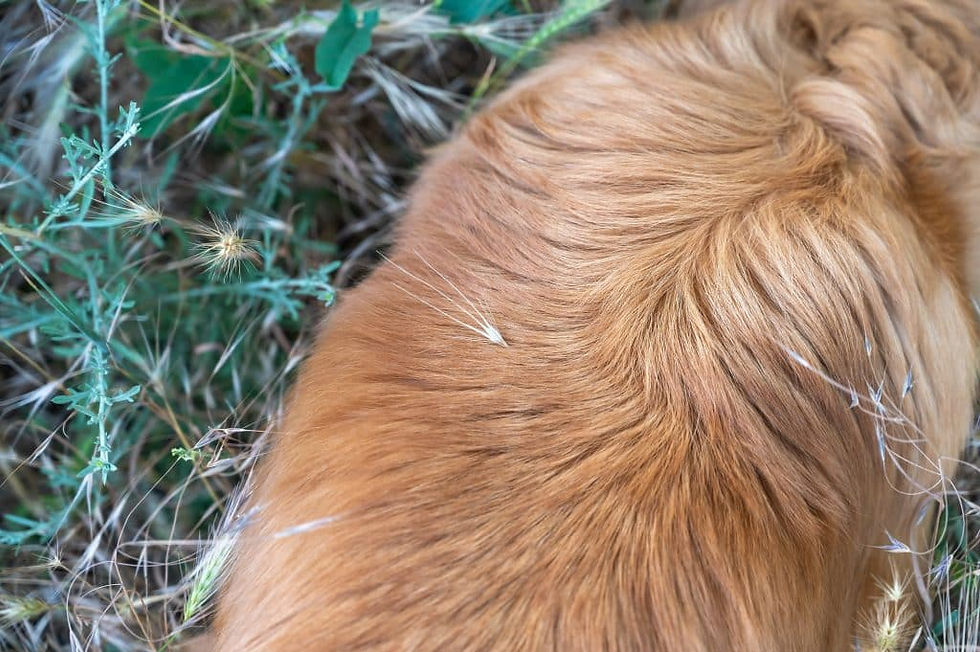
Regular Grooming and Brushing: Make grooming and brushing a part of your pet's or horse's regular routine. Regularly comb through their fur or coat to detect and remove any foxtails that might have become tangled or embedded. Pay close attention to areas like paws, tails, manes, and ears.
Avoiding High-Density Foxtail Areas: When selecting outdoor areas for walks, playtime, or riding, opt for locations with minimal foxtail growth. Avoid dense fields or overgrown trails where the likelihood of encountering foxtails is higher. Opt for well-maintained areas whenever possible.

Using Protective Gear: Consider using protective gear to create an additional barrier between your pets or horses and foxtails. Booties for pets and leg wraps for horses can help shield vulnerable areas from foxtail attachment. Ensure that the protective gear fits properly and doesn't cause discomfort.
Keeping Fur and Manes Trimmed: Regularly trim the fur of your pets, especially long-haired breeds, to reduce the likelihood of foxtails becoming entangled and embedded. For horses, maintain a manageable mane and tail length to minimize the risk of foxtail attachment. Focus on trimming around ears, eyes, and paws for both pets and horses.
Conducting Thorough Inspections: After outdoor activities, take the time to thoroughly inspect your pets or horses for any signs of foxtails. Carefully examine their fur, ears, eyes, paws, and hooves. Use your fingertips or a fine-toothed comb to part the fur and identify any embedded foxtails. Promptly address any foxtails you discover.
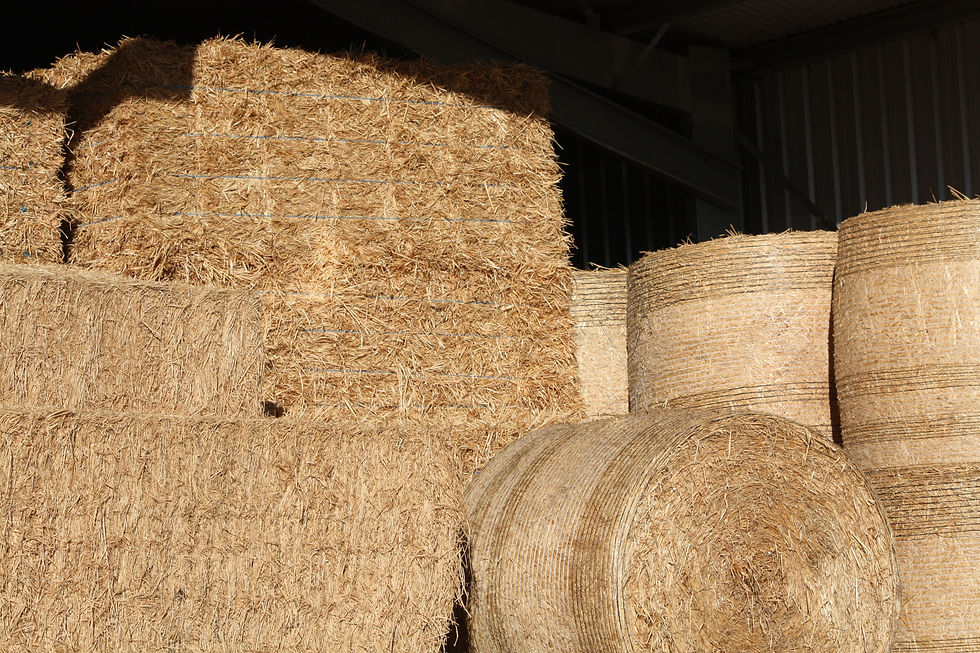
Feed High Quality Hay: High-quality hay is typically sourced from well-maintained fields and pastures where foxtails are less likely to grow and spread. When hay is harvested from areas with lower foxtail populations, the chances of the hay containing foxtail seeds are significantly reduced. Reputable hay producers prioritize quality control, which includes thorough inspection and processing procedures.
Routinely Check Grazing Pastures: If you are a horse owner, you must check your pastures to make sure foxtail is not growing in an area your horse can reach. Horses are notorious for getting themselves into trouble. So, do yourself a favor and prevent this plant from being another mode of harm.
By integrating these preventive measures into your pet care and horse management routines, you can significantly reduce the chances of encountering foxtail-related issues. Remember that awareness and vigilance are key, and by taking these proactive steps, you're taking important strides toward ensuring the safety, health, and well-being of your cherished animal companions.
Outdoor Safety Guidelines for Pets
Ensuring the safety of your pets and horses during outdoor activities involves a combination of careful planning, training, and attentive supervision. By following these specific guidelines, you can create a safer environment that minimizes the risk of encountering foxtails and other potential hazards:

Select Foxtail-Free Areas: Prioritize areas for walks, play, and riding that have a lower likelihood of foxtail growth. Parks, designated trails, and well-maintained open spaces are often safer choices. Avoid fields or areas with tall grass that could harbor hidden foxtails.
Stick to Well-Maintained Paths: When exploring trails or outdoor spaces, opt for well-maintained paths. These paths are more likely to be regularly cleared of foxtails and other potential dangers. Avoid venturing into overgrown or densely vegetated regions where foxtails may be prevalent.
Train Pets to "Leave It": Teach your pets the "leave it" command, which can deter them from investigating or consuming potentially harmful substances, including foxtails. Consistent training reinforces their understanding of this command, reducing the likelihood of encountering foxtails during outdoor activities.
Monitor Closely During Outdoor Activities: Supervision is crucial during outdoor adventures. Keep a watchful eye on your pets and horses to ensure they don't wander into areas with foxtails. If you notice them showing signs of irritation, discomfort, or any unusual behavior, investigate immediately to identify and address any potential issues.
Adjust Activities Based on Environmental Conditions: Be mindful of environmental factors that could increase foxtail exposure. For example, windy days may cause foxtails to dislodge more easily, increasing the risk of contact. On such days, consider engaging in activities in more controlled environments or areas with minimal foxtail growth.

Leash Control for Pets: When walking your pets, keep them on a leash in areas where foxtails are a concern. This not only prevents them from running into potentially hazardous areas but also allows you to guide their movements and prevent direct contact with foxtails.
Create a Safe Play Area: Designate a safe play area in your yard or outdoor space by regularly clearing it of foxtails and other potential hazards. This controlled space can provide your pets with a safe environment for activities without the risk of encountering foxtails.
By adhering to these outdoor safety guidelines, you can enjoy outdoor experiences with your pets and horses while minimizing the potential risks associated with foxtails. Your proactive approach to selecting safe areas, training, and vigilant supervision can go a long way in ensuring the health and happiness of your animal companions.
Responding to Foxtail Encounters
Encountering a foxtail can be a concerning situation, but knowing how to respond calmly and effectively is essential to ensure the well-being of your pet or horse. Here's an outline of immediate steps to take if you suspect your animal has come into contact with a foxtail:
Stay Calm and Soothe the Animal: Your pet or horse might already be stressed or uncomfortable due to the foxtail encounter. Stay calm and use a soothing tone to reassure them. Approach slowly and gently, minimizing any additional stress.
Assess the Situation: If you notice any visible foxtails on the surface of the fur or coat, assess whether they can be safely removed. Keep in mind that attempting to remove a deeply embedded foxtail could cause more harm than good, especially if you're not experienced in such procedures.
Carefully Remove Superficial Foxtails: If you're confident in your skills and the foxtail is visible and superficial, you can attempt to remove it using tweezers. Make sure the tweezers are clean and sterile to prevent infection. Grasp the foxtail as close to the entry point as possible and pull it out gently but firmly, following the direction of its growth. Be cautious not to break the foxtail while removing it, as this can make the situation worse.

Seek Professional Assistance: For foxtails that are deeply embedded, located in sensitive areas like ears or eyes, or if you're uncertain about removing them yourself, it's best to seek professional help. Contact your veterinarian to handle the situation. They have the expertise and tools needed to safely and effectively remove foxtails without causing harm.
Monitor for Any Signs of Complications: After removing a foxtail or seeking professional assistance, closely monitor your pet or horse for any signs of infection, swelling, or ongoing discomfort. If you notice any changes in behavior, signs of irritation, or worsening symptoms, consult a veterinarian promptly.
Remember, the safety and well-being of your pet or horse come first. If you're ever unsure about removing a foxtail or dealing with a potential complication, seeking professional assistance is the wisest course of action. Responding promptly and responsibly to foxtail encounters can prevent more severe health issues and ensure a swift recovery for your beloved animal companion.
The Benefits of Red Light Therapy for Healing Wounds After Foxtail Removal
After a pet or horse has encountered a foxtail and undergone professional veterinary care to remove the foxtail or address related complications, the healing process is of paramount importance. In recent years, red light therapy has emerged as a non-invasive and effective option for promoting wound healing and aiding recovery in animals. Let's explore the benefits of red light therapy for healing wounds in these scenarios:
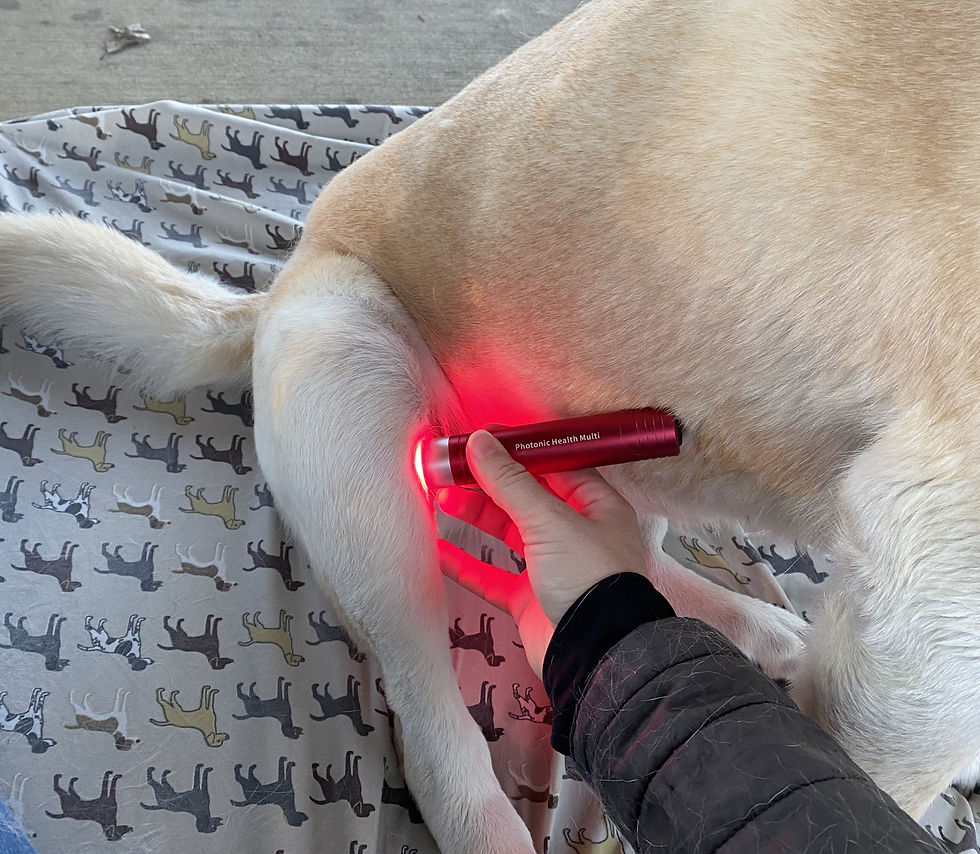
Accelerated Healing Process: Red light therapy, also known as photobiomodulation therapy, employs low-level red or near-infrared light to stimulate cellular activity. This stimulation triggers an increase in cellular energy production, which in turn accelerates the healing process. For wounds resulting from foxtail removal or related complications, red light therapy can expedite tissue repair, reduce inflammation, and promote overall recovery.
Enhanced Blood Circulation: Red light therapy has been shown to improve blood circulation in treated areas. Increased blood flow brings oxygen and nutrients to the wound site, supporting the growth of new, healthy tissue. Improved circulation also aids in the removal of waste products, helping to create a conducive environment for healing.
Reduction of Inflammation: After a foxtail encounter, inflammation is a common response as the body's immune system reacts to the presence of foreign material. Red light therapy has been found to have anti-inflammatory effects, helping to mitigate excessive inflammation and discomfort associated with wound healing. By modulating the inflammatory response, red light therapy contributes to a more comfortable recovery.
Pain Relief and Comfort: Pets and horses may experience pain and discomfort following foxtail removal, especially if the wound area is sensitive. Red light therapy has analgesic properties that can provide relief from pain, helping animals feel more at ease during the healing process.
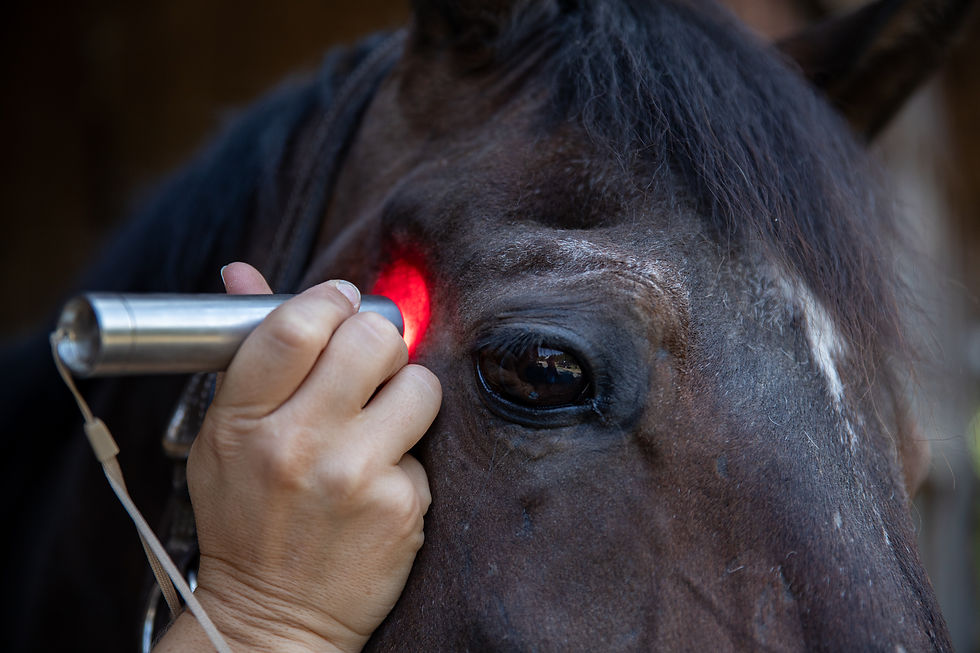
Minimized Scar Formation: By supporting the production of collagen, an essential protein for wound healing, red light therapy can help minimize scar tissue formation. Collagen plays a critical role in tissue regeneration, and its proper alignment is key to reducing the appearance of scars.
Non-Invasive and Stress-Free: Red light therapy is a non-invasive option that doesn't require medications or invasive procedures. This can be particularly beneficial for pets and horses who may be anxious or stressed from prior medical interventions. Red light therapy is gentle, painless, and well-tolerated by most animals.
Adjunctive Treatment: Red light therapy can complement traditional veterinary care. When used as part of a comprehensive treatment plan, it can enhance the healing process and contribute to optimal outcomes.
Before incorporating red light therapy or any new treatment into your pet or horse's recovery plan, it's crucial to consult with your veterinarian. They can provide guidance on the suitability of red light therapy for your animal's specific condition and ensure that it complements the overall treatment strategy. When applied with professional guidance, red light therapy can play a valuable role in promoting healing, comfort, and well-being after a foxtail-related incident.
Conclusion to Our Foxtail Blog
In the vast tapestry of outdoor adventures that pets and horses embark upon, the lurking danger of foxtails is a reminder that nature's beauty can conceal unexpected perils. The significance of understanding foxtail dangers cannot be overstated, as these seemingly innocuous plants hold the potential to bring discomfort, pain, and even long-term health complications to our cherished companions.
Through the journey we've undertaken in this article, we've unraveled the multifaceted risks posed by foxtails to pets and horses alike. From their ability to embed themselves in sensitive areas to the potential for infections and organ damage, foxtails demand our unwavering attention. The necessity of recognizing signs like excessive scratching, discomfort, and behavioral changes further underscores the urgency of proactive measures.
Safeguarding the well-being of our pets and horses hinges on our commitment to responsible ownership. By embracing a regimen of regular grooming, selective outdoor exploration, and conscientious training, we can create an environment that minimizes the likelihood of foxtail encounters. Moreover, staying vigilant through inspections and responding swiftly to potential issues ensures that any foxtail-related concerns are addressed before they escalate into more serious health problems.
As stewards of our animal companions' safety and happiness, we are entrusted with the duty to arm ourselves with knowledge, empathy, and action. Education about foxtail dangers empowers us to make informed decisions that shield our pets and horses from harm. The importance of understanding, awareness, and compassion cannot be overstated, and by embracing these principles, we pave the way for a future where our pets and horses can thrive in the great outdoors without succumbing to the hidden dangers that lurk beneath the surface.

#foxtails #dangersoffoxtails #horses #pets #health #protectyourpet #redlightherapy #foxtailspecies #foxtailplants #foxtailseeds #foxtailsinpets #foxtailsandpets #dangersforpets #petowner #horseowner #horsehay #quialityhay #horsecare #horsehealth #horsesandfoxtails #dangerfoxtail #dogowner #dogmom #horsemom #horseowner #barnmanagement















